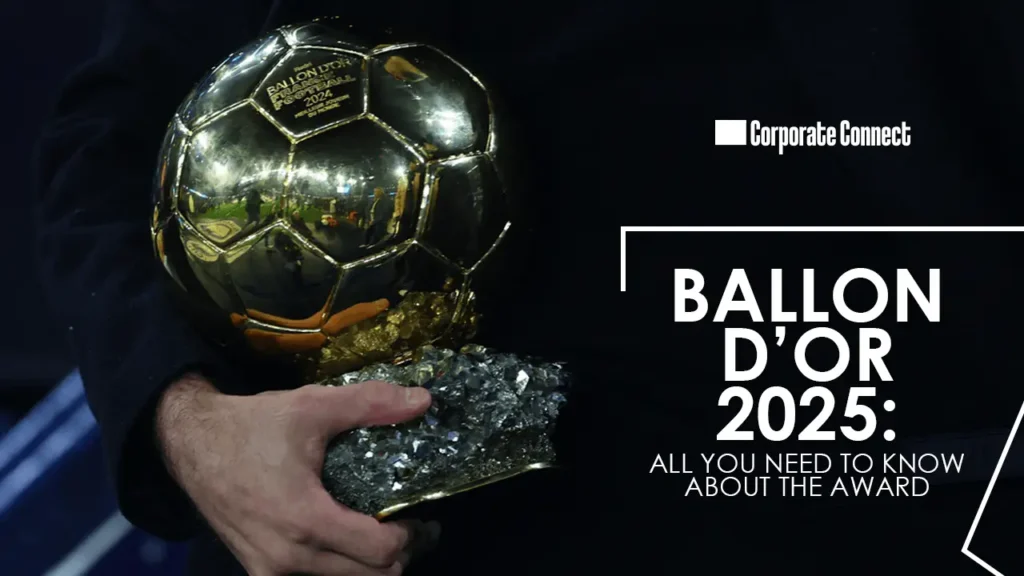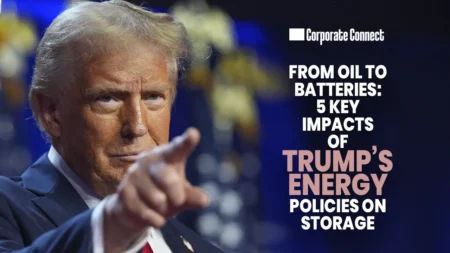Ballon d’Or 2025: All You Need to Know About the Award
Written By Jaya Pathak
The Ballon d’Or Is the most influential individual honor given in the field of football. It transferred its valuation and shapes sponsor portfolios. This award also known as golden ball is presented by the French News magazine France football. It is one of the oldest and generally regarded as the most prestigious individual award for football players. This award has been started since 1956.
What Ballon d’Or Represents
The golden ball award was founded by French News magazine, France football. It is historically aligned with European club seasons. It is given to the most outstanding footballer based on performance, impact indecisive matches and consistency over the designated season.
In the recent years, this award has emphasized on season outcomes rather than calendar years period it shows its alignment with club and international competition which is strengthening commercial storytelling for sponsors and broadcasters. It also has elevated the knockout stage performances along with continental trophies and clutch contribution.
Core Categories
- Men’s and Women’s Ballon d’Or
- Kopa Trophy (U21)
- Yashin Trophy (Goalkeeper)
- Club and Coach Awards
- Humanitarian honors
Why 2025 Matters for Business?
Three macro themes defined the 2025 cycle for decision-makers:
1) Competitive outcomes and late-season narrative arcs carried outsized weight. Titles in continental tournaments translated into voter momentum, which, in turn, unlocked sponsor storytelling with global reach.
2) The women’s game continued its commercial ascent. Recognition at parity with the men’s award reinforced media rights valuations, ticketing momentum, and multi-market brand campaigns built around women’s football leaders.
3) Youth supremacy became a programming asset. The U21 spotlight validated platform strategies centered on emerging stars whose highlight reels dominate short-form video, driving cost-efficient audience acquisition.
Selection Mechanics and Voter Priorities
Journalists from accredited outlets submit ranked ballots that typically emphasize five attributes:
– Quality and consistency across the full season
– Performance in decisive fixtures (knockout rounds, finals, rivalry matches)
– Leadership and contribution to team structure
– Fair play and professional conduct
– Career trajectory in context (especially for the Kopa and Yashin awards)
This combination tempers raw statistics with game state importance, rewarding players who define moments rather than merely accumulate totals in low-stakes matches. For brands, the result is a list of athletes whose equity is anchored in narrative credibility, not just metrics.
Commercial Ripples After the Ceremony
- Contract leverage: Winners and top finishers often renegotiate appearance fees and bonus structures within months, particularly with apparel, beverage, and fintech categories.
- Media programming: Broadcasters package retrospective features and docu-formats around the finalists; OTT platforms activate anthology content linking past winners to current stars to improve retention curves.
- Merchandising: Commemorative drops—limited kits, signed prints, and capsule collections—convert ceremonial buzz into short-cycle revenue.
- Cross-market expansion: Award resonance in Latin America, MENA, and Southeast Asia generates incremental audiences for European club channels and preseason tours.
Talent Development Implications
For clubs, the 2025 outcomes validate three recruitment and academy theses:
- Multi-competition resilience: Players who maintain output across league, continental, and international fixtures attract premium indexing in performance models.
- Tactical versatility: Athletes who impact multiple phases (pressing triggers, progression, chance creation, set-piece threat) gain visibility with voters and analysts.
- Psychological durability: Evidence of clutch performance under scrutiny—finals, away legs, penalty shootouts—remains a key differentiator.
Women’s Ballon d’Or: Strategic Takeaways
The women’s award now anchors sponsorship calendars with the same strategic gravity as the men’s. The winners’ club affiliations correlate with spikes in season-ticket renewals, global content views, and grassroots registrations. For marketers, aligning with elite women’s stars offers high trust scores, favorable brand-safety profiles, and increasingly comparable reach among younger demographics.
Governance, Integrity, and Audience Trust
The award’s credibility is a commercial asset. Transparent nomination lists, coherent season definitions, and ballot disclosure practices have tightened the link between merit and recognition. That integrity underwrites premium CPMs for award-night broadcasts and supports sold-out hospitality at the ceremony venue, reinforcing the product-market fit between elite recognition and luxury brand partners.
How Executives Can Leverage the 2025 Momentum
- Portfolio alignment: Anchor at least one campaign flight around an award winner or finalist whose fan demographics match priority markets; build creative around decisive-match narratives rather than generic greatness.
- Content sequencing: Use a “before-during-after” arc—pre-ceremony predictive content, live-night social activation, and post-ceremony mini-docs—to stretch engagement over three fiscal weeks.
- Data partnerships: Integrate social listening and commerce telemetry to attribute sales lift to award-linked creatives; refine next-season spend by player cluster.
- Women’s game amplification: Pair a women’s award winner with a men’s finalist in co-equal creative to signal parity and unlock incremental audience segments.
- Risk management: The endorsements can be diversified across two or three finalist per gender to maintain campaign continuity and combat against upsets.
Future trends
Experts are emphasizing on season long consistency and decisive stage output with analytic driven storytelling. They are saying that it can become more central to voter discourse and sponsored messaging. As streaming platforms lean harder into athlete-led formats and clubs formalize creator partnerships, the award’s influence will extend beyond one night, shaping a year-round content economy tied to individual excellence.
Conclusion:
For investors, brand managers, and rights holders, the Ballon d’Or is not merely a trophy count—it is a reliable barometer of narrative power, a predictor of commercial velocity, and a guidepost for where global football culture is heading. Ground strategies in the award’s logic, and the return on attention tends to follow.










